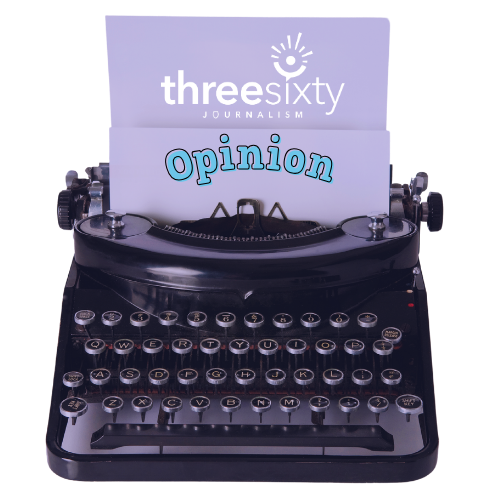
Sonia Kharbanda is a junior at Saint Paul Academy and Summit School in Saint Paul.
This story was published in Sahan Journal on November 4, 2024.
By Sonia Kharbanda
Former president Donald Trump made headlines this July when he accused Vice President Kamala Harris of becoming Black for political benefit. “Is she Indian or is she Black?” he wondered publicly, questioning the presidential candidate’s biracial identity.
Trump’s words reflect our nation’s uncomfortable fascination with people, like myself, who transcend a single identity.
I can’t remember the first time someone commented on my race, but the feeling is unmistakable. The most common questions – “Where are you from?” and “What are you really?” – don’t bother me anymore. But when someone calls my skin “exotic,” or questions if I’m really both Indian and white since I don’t “look like it,” I start to feel like a zoo animal on display. My personal favorite was when a family friend said I was the only person he knew who was “both oppressed and a colonizer.”
While these incidents are uniquely my own, being questioned, misunderstood, and stereotyped is a common experience for multiracial people. Trump’s challenges and doubts about Harris’ identity simply put this experience on a national stage.
In order to understand the present experience of multiracial people, it is important to know our past. A 1662 statute in Virginia proclaimed that a child’s freedom is dependent on the condition of the mother, which made it profitable for slaveholders to impregnate enslaved women and “own” their children. In 1691, Virginia’s colonial government declared interracial marriage illegal.
These laws established the idea that it was acceptable to have children with an enslaved person for purposes of labor or property but not to have a relationship or marry them. Then, the one-drop rule became policy in many states in the 1800s, asserting that even one Black ancestor was enough to classify someone as “colored.” It wasn’t until 1967 that the Supreme Court case Loving v. Virginia declared state laws prohibiting interracial marriage in violation of the Fourteenth Amendment. However, efforts to prevent racial mixing have persisted; Alabama’s ban on interracial marriage remained in its state laws until 2000. Even then, 40% of voters supported keeping the law.
Despite our nation’s pervasive cultural discomfort, its multiracial population is on the rise.
According to the 2020 census, multiracial people now account for 10.2% of the population, a 276% increase from 2010. This shift represents the largest change compared to all other racial groups; it could be attributed to an increase in immigration and clarified options on the census for self-describing one’s race.
In addition to an increase in the multiracial population, the Pew Research Center reported in 2021 that the percentage of interracial marriages in the U.S. is increasing, too. In 2019, 19% of newlyweds and 11% of all married people were in interracial marriages. The data is clear: we are inevitably becoming a multiracial society. Harris’ ascension to vice president and potentially the nation’s highest office reflects this country’s diverse and multicultural future.
The backlash to Trump’s comments has focused on explaining that Harris has, in fact, always been Black. News organizations scrambled to prove her Black credentials: she attended Howard University, a historically Black university, where she joined a Black sorority. But the point isn’t that she is Black or that she has never hidden her identity. It is that she is and has always been both Black and Indian.
Trump’s false claims about her identity are an example of the bigotry that multiracial people face and show that electing Barack Obama, the first multiracial president, did not change the discomfort many Americans feel toward those who exist outside of rigid binaries.
You have a role to play in moving our country forward – regardless of who wins the presidential race – for the multiracial people in your life. Educate yourself on what it means to be of mixed race. Understand that within the broad category of multiracial identities, each person may label themselves differently or embrace one part of their background more strongly. Advocate for representation of multiracial identities in all demographic forms and surveys. Identify and work against your own biases and tendencies to classify others as one thing or another.
When I think of the future of this country, I see my own face and the varied faces of multiracial people. We reflect both a rich diversity of experiences and this country’s paradoxical relationship to race. The United States aspires to welcome all and embraces a “melting pot” ideology, but at the same time has implemented policies and practices to keep people apart and prevent racial mixing. It is worth celebrating that in spite of bans on interracial marriages and discrimination against mixed-race children, the multiracial population is now growing and thriving.
Just as Obama’s presidency was not the cure for racism, Harris’ candidacy simultaneously reflects how far we have come and how far we still have to go in understanding what it means to be multiracial.
Sonia worked with Minneapolis Documenters Editor Jackie Renzetti and Center for Broadcast Journalism Managing News Director Marianne Combs to complete her opinion story. This story was produced as part of ThreeSixty Journalism’s 2024 Op-Ed Workshop for high school youth in partnership with Sahan Journal and the Minnesota Star Tribune.

